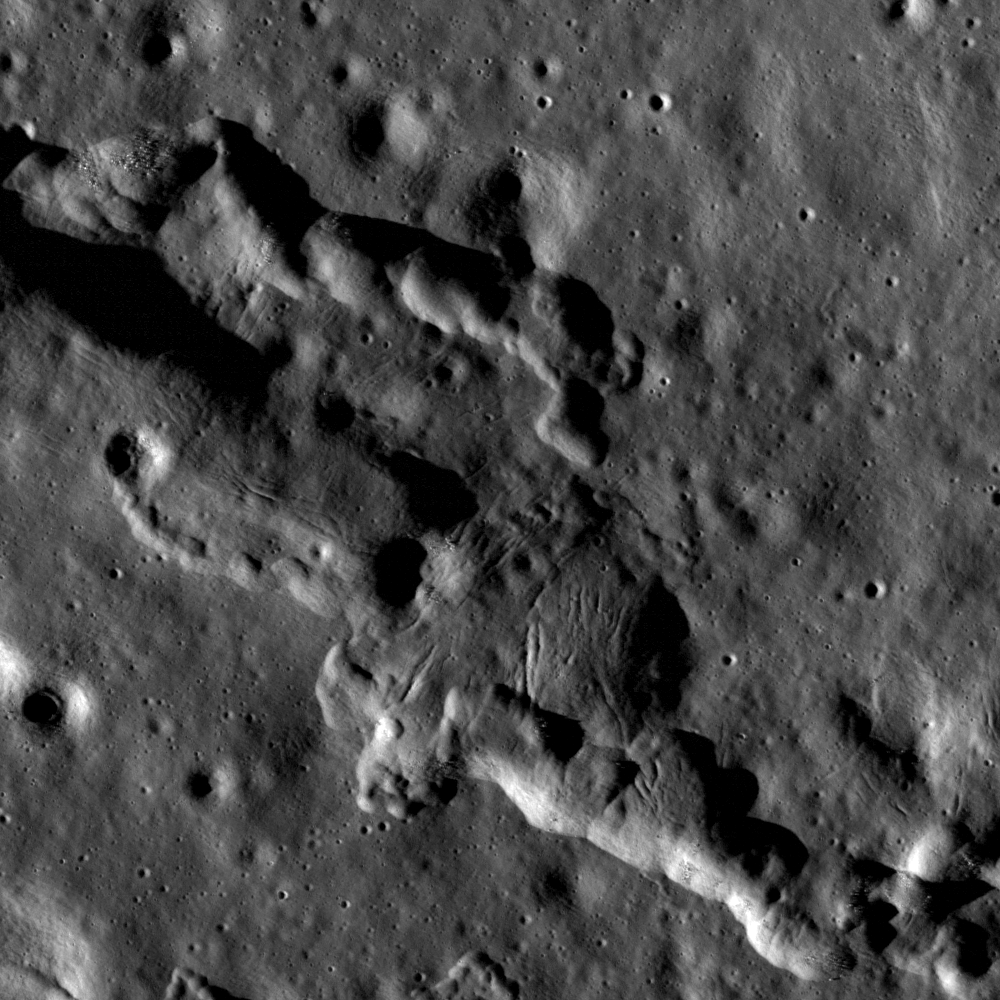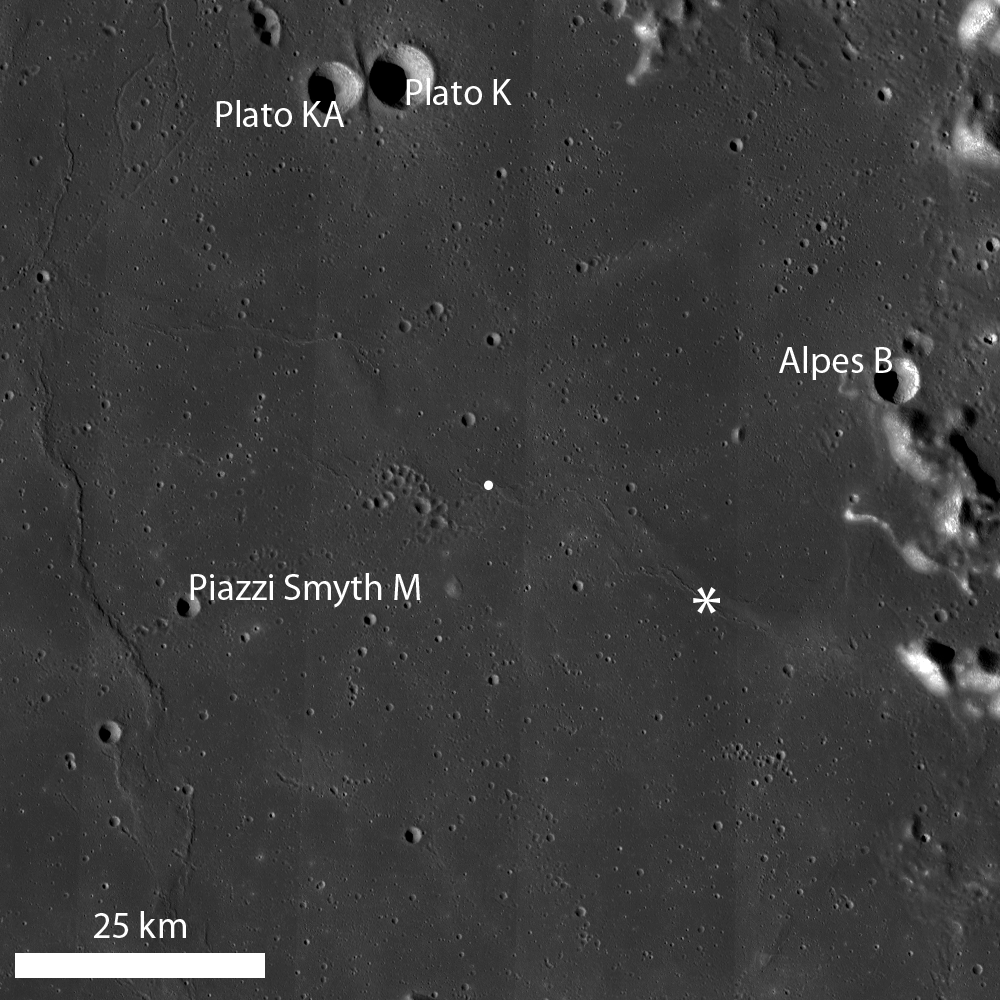
Wrinkle ridges are the result of compressional stresses, formed by faults when the rocks fracture due to squeezing (contractional strain). Unlike many of the wrinkle ridges previously featured, today's wrinkle ridge does not have boulders nor high-reflectance material, rather it exhibits unusual groups of linear features along the ridge crest. A quick look at the illumination direction (from the lower left in the opening image) shows that these features are negative relief features - troughs formed by fractures or cracks along the ridge crest. These cracks do not have a single orientation: they are parallel to the ridge crest, perpendicular to the ridge crest, and angles in between. The cracks range from ~2 m to ~10 m in width and ~30 m to ~150 m in length. The big question is - how did these cracks form?
Open fractures in rocks are usually extensional features, resulting from tensional stress that pulls or stretches rocks and regolith in different directions. The stresses associated with crack formation are opposite to the compressional stresses that form wrinkle ridges, so what is going on? Wrinkle ridges are formed by thrust faults, and looking at the opening image, you can see that the rocks from the upper right side were pushed up over the rocks on the lower left, but not in a straight line. Most wrinkle ridges on the Moon are sinuous or arcuate in morphology, reflecting the local differences in mechanical properties of the rocks in which they form. Where do the cracks fit into this overall compressional story? When the mare basalts break and thrust upward, the layer of rock that forms the wrinkle ridge folds (see Figure 26 here). Sometimes cracks form on the wrinkle ridge crest because the folded rock is now bending and in extension (pulling apart) at the crest of the fold. But wait! This explanation only addresses the tensional cracks that are parallel to the ridge crest, not the cracks that are oriented in other directions. The cracks with different orientations probably reflect extension too, especially because this wrinkle ridge is very complex and sinuous. It is possible that folding not parallel to the main ridge or multiple secondary thrust faults may be responsible for the complexity of the wrinkle ridge, and that complexity promotes tensional stresses with orientations that we might not normally expect. Additional scientific exploration of this wrinkle ridge may help disentangle the story of stress, as will comparative studies to other wrinkle ridges in the vicinity. Comparisons may be difficult to make because there is only one other well-known wrinkle ridge with similar open fractures: Littrow Ridge near the Apollo 17 landing site (Figure 75 from Apollo Over the Moon). However, a survey at the LROC NAC scale of lunar wrinkle ridges is not yet complete, so there may be many other similar cases. Have a look!
Feeling adventurous? Explore the full LROC NAC to see if there are tension cracks along the length of the wrinkle ridge!
Related Posts: Zebra Stripes
Bright ridge near Mons Hansteen
Wrinkled Planet
Right Angle
Boulder clusters on a ridge crest
Published by Lillian Ostrach on 13 July 2011
